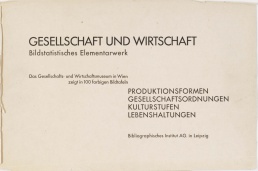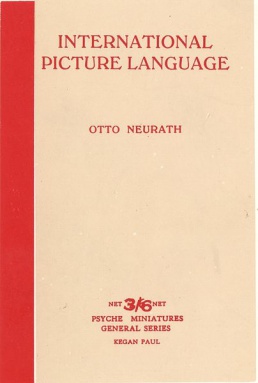Difference between revisions of "Otto Neurath"
| Line 26: | Line 26: | ||
* Sophie Elisabeth Hochhäusl, ''[http://txt.architekturtheorie.eu/otto-neurath-city-planning-sophie-hochhaeusl/?lang=en Otto Neurath - City Planning: Proposing a socio-political Map for Modern Urbanism]'', Innsbruck University Press, 2011, [http://gen.lib.rus.ec/book/index.php?md5=12b982530f3fb9d50ca86952873c40cc PDF]. {{en}} | * Sophie Elisabeth Hochhäusl, ''[http://txt.architekturtheorie.eu/otto-neurath-city-planning-sophie-hochhaeusl/?lang=en Otto Neurath - City Planning: Proposing a socio-political Map for Modern Urbanism]'', Innsbruck University Press, 2011, [http://gen.lib.rus.ec/book/index.php?md5=12b982530f3fb9d50ca86952873c40cc PDF]. {{en}} | ||
| − | ===Book chapters, articles=== | + | ===Book chapters, articles, theses=== |
* Marie Neurath, [http://isotyperevisited.org/1955/03/memorandum-on-training-for-visual-education.html "Memorandum on training for visual education"], [12 Mar 1955]. Manuscript. {{en}} | * Marie Neurath, [http://isotyperevisited.org/1955/03/memorandum-on-training-for-visual-education.html "Memorandum on training for visual education"], [12 Mar 1955]. Manuscript. {{en}} | ||
* Nader Vossoughian, [http://www.academia.edu/3127404 "The Language of the World Museum: Otto Neurath, Paul Otlet, Le Corbusier"], ''Transnational Associations'' 1-2 (January-June 2003), Brussels, pp 82-93. {{en}} | * Nader Vossoughian, [http://www.academia.edu/3127404 "The Language of the World Museum: Otto Neurath, Paul Otlet, Le Corbusier"], ''Transnational Associations'' 1-2 (January-June 2003), Brussels, pp 82-93. {{en}} | ||
| Line 45: | Line 45: | ||
* Erwin Dekker, [http://www.denktankvizier.org/wp-content/uploads/2014/10/Dekker-The-Intellectual-Networks-of-Otto-Neurath.pdf "The Intellectual Networks of Otto Neurath: Between the Coffeehouse and Academia"], ''European Studies'' 32 (2014), pp 103-121. {{en}} | * Erwin Dekker, [http://www.denktankvizier.org/wp-content/uploads/2014/10/Dekker-The-Intellectual-Networks-of-Otto-Neurath.pdf "The Intellectual Networks of Otto Neurath: Between the Coffeehouse and Academia"], ''European Studies'' 32 (2014), pp 103-121. {{en}} | ||
| + | * Fabian Tompsett, [[Media:Tompsett_Fabian_2015_Encyclopedism_for_Development.pdf|''Encyclopedism for Development: From the Unity of Science Movement to Cybernetics'']], University of East London, 2015, 71 pp. Master's thesis. | ||
| + | |||
* [http://nyit.academia.edu/NaderVossoughian More writings on Neurath by Nader Vossoughian] | * [http://nyit.academia.edu/NaderVossoughian More writings on Neurath by Nader Vossoughian] | ||
* [http://isotyperevisited.org/texts/index.html More] | * [http://isotyperevisited.org/texts/index.html More] | ||
Revision as of 17:37, 31 October 2015
Otto Neurath (1882, Vienna – 1945, Oxford) was an Austrian economist, economic-historian, Wiener-Kreis philosopher and briefly a politician (he served as a minister under the Bavarian Council Republic). Before he was to flee his native country in 1934, Neurath was one of the leading figures of the Vienna Circle.
In 1924, he opened the Gesellschafts- und Wirtschaftsmuseum (GeWiMu) in Vienna, where he devised the Wiener method of visual statistics or isotypes. His objective was to help workers become aware of the economic reality. Two years afterwards he encountered the artist Gerd Arntz, known primarily as a member of the Cologne Progressives group, who settled in Vienna in 1929 to elaborate Neurath’s ideas. When Neurath established the sister institute Isostat in Moscow, Arntz joined him there for extended periods. In 1934 both their operations in Vienna and Moscow were discontinued almost simultaneously. After the civil war in February, the Austro-fascist government of Dolfuss shut down the red GeWiMu – located in the Volkshalle of the Viennese town hall. In Moscow the Isostat fell out of favour, when socialist realism prevailed over ‘anonymity’ and the ‘Western, constructivist, decadent designs.’
Both Neurath and Arntz fled to The Hague, where they compiled statistics for N.W. Posthumus (founder of the International Institute of Social History) in the years 1932-36. In May 1940 Neurath escaped to London, where he ran his fourth institute, the Isotype Institute, from 1942 until his death in 1945. Gerd Arntz took a job at the CBS and attended the review exhibition of his work at the Haags Gemeentemuseum in 1975. (from a newsletter of the International Institute of Social History)
Publications
- with Gerd Arntz, et al., Gesellschaft und Wirtschaft - Bildstatistisches Elementarwerk, Leipzig: Bibliographisches Institut, 1930. (German)
- editor, Einheitswissenschaft book series, 1933-39. (German)
- Unified Science: The Vienna Circle Monograph Series originally edited by Otto Neurath, now in an English edition, intro. Rainer Hegselmann, trans. Hans Kaal, ed. Brian McGuinness, Dordrecht: Reidel, 303 pp. (English)
- International Picture Language: The First Rules of Isotype, 1936. (English)
- Philosophical Papers 1913-1946: With a Bibliography of Neurath in English, Dordrecht: Reidel, 1983. (English)
- Economic Writings: Selections, 1904-1945, Springer, 2004. (English)
- From Hieroglyphics to Isotype: A Visual Autobiography, eds. Matthew Eve and Christopher Burke, Hyphen Press, 2011, 224 pp. (English)
- More
Literature
Books
- Nancy Cartwright, Jordi Cat, Lola Fleck, Thomas E. Uebel, Otto Neurath: Philosophy Between Science and Politics, Cambridge University Press, 1996. Reviews: Mormann (BJPS 1997), Okruhlik (ISPS 1997), Ryckman (PhilRev 1998). (English)
- Elisabeth Nemeth, Stefan W. Schmitz, Thomas E. Uebel (eds.), Otto Neurath's Economics in Context, Springer, 2007. (English)
- Nader Vossoughian, Otto Neurath: The Language of the Global Polis, Rotterdam: NAi Publishers, 2008, 176 pp. [1] Reviews: Miller (MM 2010), Theodore (JAE 2010), Young Lee (DI 2011), Heller (NYT 2011), Crawley (TechComm 2012), Ruedi Ray (UrbStud 2013). (English)
- Sophie Elisabeth Hochhäusl, Otto Neurath - City Planning: Proposing a socio-political Map for Modern Urbanism, Innsbruck University Press, 2011, PDF. (English)
Book chapters, articles, theses
- Marie Neurath, "Memorandum on training for visual education", [12 Mar 1955]. Manuscript. (English)
- Nader Vossoughian, "The Language of the World Museum: Otto Neurath, Paul Otlet, Le Corbusier", Transnational Associations 1-2 (January-June 2003), Brussels, pp 82-93. (English)
- Frank Hartmann, "Humanization of Knowledge Through the Eye", in Making Things Public: Atmospheres of Democracy, eds. Bruno Latour and Peter Weibel, 2005, pp 698-707. (English)
- Frank Hartmann, "The Power of Pictograms", Stroom, The Hague, 31 Oct 2006. (English)
- Frank Hartmann, "Visualizing Social Facts: Otto Neurath's ISOTYPE Project", in European Modernism and the Information Society, ed. W. Boyd Rayward, Ashgate, 2008, pp 279-293. (English)
- Wim Jansen, "Neurath, Arntz and ISOTYPE: The Legacy of Art, Design and Statistics", Journal of Design History 22:3 (2009), pp 227-242. (English)
- Jordi Cat, "Otto Neurath", in Stanford Encyclopedia of Philosophy, 2010. (English)
- Eric Kindel, Sue Walker, "Isotope Revisited", Progetto grafico 18 (Sep 2010); repr. in Progetto grafico international 19 (Mar 2011). (English)
- Christopher Burke, "The Linguistic Status of Isotype", in Image and Imaging in Philosophy, Science and the Arts, 2, eds. Richard Heinrich, et al., Frankfurt: Ontos, 2011. (English)
- Sophie Hochhäusl, "Otto Neurath: Mapping the City as a Social Fact?", in Image and Imaging in Philosophy, Science and the Arts, 2, eds. Richard Heinrich, et al., Frankfurt: Ontos, 2011. (English)
- Eric Kindel, "Reaching the People: Isotype Beyond the West", in Image and Imaging in Philosophy, Science and the Arts, 2, eds. Richard Heinrich, et al., Frankfurt: Ontos, 2011. (English)
- Hadwig Kraeutler, "Rondom Rembrandt and Beyond: On Otto Neurath’s Isotype Contributions to Visual Communication and Museum Learning", in Image and Imaging in Philosophy, Science and the Arts, 2, eds. Richard Heinrich, et al., Frankfurt: Ontos, 2011. (English)
- Elisabeth Nemeth, "Scientific Attitude and Picture Language: Otto Neurath on Visualisation in Social Sciences", in Image and Imaging in Philosophy, Science and the Arts, 2, eds. Richard Heinrich, et al., Frankfurt: Ontos, 2011, pp 59-83. (English)
- Sybilla Nikolow, "'Words Divide, Pictures Unite'. Otto Neurath's Pictorial Statistics in Historical Context", in Image and Imaging in Philosophy, Science and the Arts, 2, eds. Richard Heinrich, et al., Frankfurt: Ontos, 2011. (English)
- Friedrich Stadler, "Written Language and Picture Language after Otto Neurath--Popularising or Humanising Knowledge?", in Image and Imaging in Philosophy, Science and the Arts, 2, eds. Richard Heinrich, et al., Frankfurt: Ontos, 2011. (English)
- Erwin Dekker, "The Intellectual Networks of Otto Neurath: Between the Coffeehouse and Academia", European Studies 32 (2014), pp 103-121. (English)
- Fabian Tompsett, Encyclopedism for Development: From the Unity of Science Movement to Cybernetics, University of East London, 2015, 71 pp. Master's thesis.
- Bibliographies
See also
Links
- The Otto Neurath Bibliography Pictorial Statistics
- Neurath's page at WirtschaftsMuseum (German)
- Neurath at MedienPhilosophie.net
- Isotype: International Picture Language exhibiton, Victoria & Albert Museum, London, Dec 2010-Mar 2011.
- Otto Neurath (1882-1945): A brief biography
- Web dossier: After Neurath at Stroom Den Haag
- Neurath at Wikipedia

